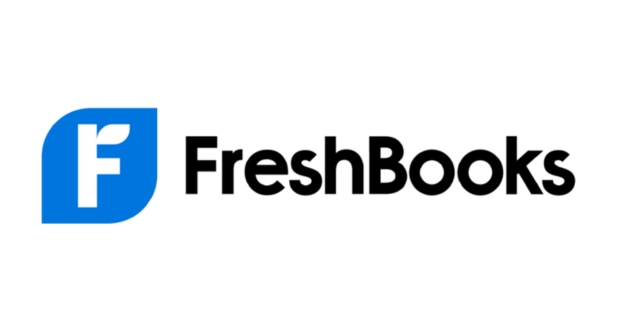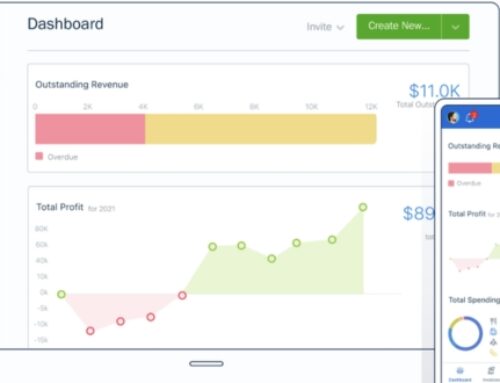Introduction to Debt Reduction
The weight of debt can feel like scaling Mount Everest – daunting, seemingly insurmountable, and casting a shadow over your future financial security. But fear not, fellow adventurers! Just as skilled climbers rely on the right tools and strategies to conquer the peak, so too can small business owners and entrepreneurs navigate the terrain of debt reduction and reach the summit of financial freedom.
A. Understanding the Impact of Debt on Financial Health:
Before embarking on your debt-reduction journey, it’s crucial to understand the enemy. Debt, while often a necessary tool for growth, can become a heavy anchor, dragging down your financial health. It:
- Consumes cash flow: Every debt payment siphons money away from vital business operations and potential investments, hindering your growth potential.
- Increases stress: The constant pressure of looming payments can take a toll on your mental well-being, impacting your focus and decision-making.
- Limits financial freedom: Debt restricts your ability to make choices freely, dictating your spending and hindering your ability to achieve financial goals.
However, the good news is that you’re not alone in this climb. With the right tools and strategies, you can not only conquer your debt but also emerge stronger, more resilient, and ready to reach your financial summit.
B. Introducing Your Sherpa: FreshBooks as a Debt Management Tool:
Imagine scaling Everest with a seasoned Sherpa by your side, guiding you through treacherous paths, providing essential equipment, and keeping you focused on the goal. FreshBooks is that Sherpa for your debt-reduction journey. It’s not just a bookkeeping platform; it’s a powerful financial toolkit equipped to:
- Gain Clarity: Shine a Light on Your Debt: FreshBooks provides comprehensive reports and visualizations that reveal the true picture of your debt. See your outstanding balances, interest rates, and minimum payments in one clear view, enabling informed decision-making.
- Craft a Strategic Plan: Map Your Path to Freedom: FreshBooks empowers you to create customized debt reduction plans based on your specific goals and financial situation. Utilize its budgeting tools to allocate resources efficiently and prioritize debt payments strategically.
- Automate the Climb: Conquer the Grind with Automation: FreshBooks automates repetitive tasks like bill payments and recurring transfers, freeing up your time and mental energy to focus on your business growth.
- Monitor Progress: Stay Motivated and On Track: Track your progress towards your debt-free goal with real-time updates and visual representations. FreshBooks helps you stay motivated and celebrate milestones along the way.
Remember, debt reduction is a marathon, not a sprint. FreshBooks provides the tools and support to stay focused, motivated, and on track throughout the journey. By leveraging its features and developing strategic debt-reduction plans, you can conquer your financial Everest and reach the summit of financial freedom, one step at a time.
Assessing Your Debt Situation: Laying the Foundation for Success with FreshBooks
Conquering Mount Debt requires a map, and the first step is meticulously crafting it. In this section, we’ll equip you with the tools and strategies to create a comprehensive debt inventory, transforming the murky landscape of your financial obligations into a clear and actionable plan. Remember, knowledge is power, and with FreshBooks as your compass, identifying your debt situation is the first step towards conquering it.
A. Creating a Comprehensive Debt Inventory: Mapping the Terrain:
Just as an explorer wouldn’t embark on a journey without a detailed map, you can’t tackle your debt without a thorough inventory. This vital document is your roadmap to financial freedom, providing a clear picture of your outstanding debts and their characteristics. Here’s what you need to include:
- List of Outstanding Debts: Identify every debt you owe, including credit cards, loans, mortgages, and lines of credit. Leave no stone unturned, even those seemingly insignificant debts can add up over time.
- Balance: For each debt, record the current outstanding balance. This helps you understand the magnitude of your financial mountain.
- Interest Rate: Note the annual percentage rate (APR) for each debt. High-interest debts should be prioritized, as they siphon off the most money from your cash flow.
- Minimum Payment: Identify the minimum monthly payment required for each debt. This helps you assess your current financial commitments and plan your budget accordingly.
- Term: Note the remaining term of each debt, indicating the duration of your financial commitment. Shorter terms can provide a sense of urgency and motivation, while longer terms require strategic planning.
Remember, your debt inventory is a living document. As you pay down debts or incur new ones, update it regularly to maintain accuracy and keep your plan focused.
B. Utilizing FreshBooks for Debt Tracking and Analysis: Your Financial Sherpa:
Imagine having a mountain guide who not only maps your route but also analyzes weather patterns and suggests optimal climbing strategies. FreshBooks is your financial Sherpa, empowering you to analyze your debt situation with insightful tools and features:
- Integration with Financial Accounts: Connect your bank accounts, credit cards, and loan providers directly to FreshBooks. This eliminates manual data entry and ensures your debt inventory is always up-to-date and accurate.
- Real-Time Debt Monitoring: FreshBooks provides a centralized dashboard where you can track your debt in real-time. See your balances, interest rates, and progress towards your goals at a glance, keeping you motivated and informed.
- Visualizations and Reports: Gain deeper insights through FreshBooks’ comprehensive reports and visualizations. Analyze your debt by category, track progress over time, and identify areas for improvement.
- Scenario Planning: FreshBooks allows you to test different debt payoff strategies and see their potential impact on your finances. Explore various approaches like the debt snowball or avalanche method and choose the one that best suits your situation and goals.
FreshBooks goes beyond mere data tracking; it empowers you to analyze your debt, understand its impact, and make informed decisions. With its intuitive tools and insightful reports, you can navigate the complex terrain of your financial obligations with confidence and clarity.
Assessing your debt situation isn’t about feeling overwhelmed; it’s about gaining control. By creating a comprehensive debt inventory and utilizing FreshBooks’ powerful analysis features, you transform the unknown into a map towards financial freedom. In the next section, we’ll delve deeper into specific debt reduction strategies, helping you choose the optimal path to conquer your financial Everest.
Budgeting for Debt Repayment: Building the Ladder to Financial Freedom
You’ve mapped your financial Everest, now it’s time to build the ropes and ladders that will help you climb it. Budgeting for debt repayment is your essential gear, the foundation for a strategic ascent towards financial freedom. In this section, we’ll equip you with the tools and techniques to craft a realistic budget that prioritizes debt repayment and empowers you to conquer your financial mountain one step at a time.
A. Creating a Realistic Budget: Building a Solid Base Camp:
A realistic budget isn’t just about numbers; it’s about understanding your financial reality and making conscious choices. To build your base camp, follow these steps:
- Identify Income Sources: List all your income streams, including your business revenue, salary, and any additional income sources.
- Categorize Expenses: Group your expenses into categories like essentials (housing, utilities), discretionary (entertainment, dining), and debt payments. This helps you understand where your money goes.
- Calculate Net Income: Subtract your total expenses from your income to determine your net cash flow. This is the money you have available for debt repayment and other financial goals.
- Prioritize Debt Payments: Allocate a portion of your net income towards debt repayment. Start with high-interest debts or those with looming deadlines, using strategies like the debt snowball or avalanche method.
Remember, a realistic budget isn’t about deprivation; it’s about making informed choices. Don’t aim for perfection; focus on building a budget you can stick to consistently.
B. Leveraging FreshBooks Budgeting Features: Your Financial Toolbox:
FreshBooks isn’t just a bookkeeping platform; it’s your financial toolbox, equipped with features to streamline budgeting and keep you on track:
- Intuitive Budgeting Interface: Create customized budget categories, set spending limits, and track your progress with ease. FreshBooks’ user-friendly interface makes budgeting accessible and engaging.
- Expense Tracking and Categorization: Automatically categorize your transactions based on spending patterns, saving you time and ensuring accurate tracking.
- Real-Time Budget Monitoring: See how your spending compares to your budget in real-time, allowing you to make adjustments and stay on course.
- Forecasting and Goal Setting: Set specific debt repayment goals and visualize your progress over time. FreshBooks’ forecasting tools help you stay motivated and celebrate milestones along the way.
- Alerts and Notifications: Get notified when you’re approaching spending limits or falling behind on debt payments, ensuring you stay accountable and in control.
FreshBooks empowers you to go beyond just tracking expenses; it helps you understand your spending habits, identify areas for improvement, and make informed financial decisions. With its powerful features, you can build a flexible and realistic budget that prioritizes debt repayment and paves the way for a secure financial future.
Budgeting is a continuous process, not a one-time event. Regularly review your budget, adjust it as your income or expenses change, and don’t be afraid to seek help if needed. FreshBooks’ customer support is always ready to assist you on your journey towards financial freedom.
Prioritizing Debts for Repayment: Scaling the Peaks First with FreshBook
Conquering your debt mountain requires strategic decision-making. Not all debts are created equal, and prioritizing them effectively can significantly accelerate your journey towards financial freedom. In this section, you’ll learn how to differentiate between high and low-interest debts, identify the most impactful repayment strategies, and leverage FreshBooks’ powerful reports to make informed decisions about which debt to tackle first.
A. Differentiating Between High and Low-Interest Debts: Recognizing Your Everest:
Not all mountains are Kilimanjaro. Just like climbing peaks with varying difficulty levels, your debts can be classified into two categories:
- High-Interest Debts: These are your financial Mount Everests, with steep interest rates that drain your cash flow and hinder progress. Examples include credit card debt, personal loans with high APRs, and payday loans.
- Low-Interest Debts: These are your gentler hills, with lower interest rates that offer more manageable repayment options. Examples include mortgages, car loans with competitive rates, and student loans with government-backed interest rates.
Prioritizing high-interest debts for repayment is crucial. Their compounding interest acts like an avalanche, quickly snowballing your debt and hindering your progress. By tackling them first, you can:
- Save Money: Reducing high-interest rates frees up cash flow that you can use for further debt repayment or essential expenses.
- Reduce Stress: The constant pressure of high-interest payments can be overwhelming. Paying them off first provides a sense of accomplishment and reduces financial anxiety.
- Gain Momentum: Successfully conquering high-interest debts can motivate you to tackle the rest of your financial mountain with renewed confidence and determination.
B. Strategies for Paying Off High-Interest Debts First: Your Climbing Gear:
There are two popular strategies for tackling high-interest debts:
- Debt Avalanche: This method prioritizes paying off debts with the highest interest rates first, regardless of the balance size. Every extra dollar you pay goes towards reducing the most expensive debt, saving you money in the long run.
- Debt Snowball: This method focuses on paying off debts with the smallest balances first, regardless of the interest rate. The quick wins and sense of accomplishment can keep you motivated throughout the repayment process.
FreshBooks can help you choose the optimal strategy based on your individual circumstances. Analyze your debt situation using FreshBooks’ reports and consider factors like your risk tolerance, financial goals, and psychological motivation.
C. Utilizing FreshBooks Reports for Debt Prioritization: Your Financial Sherpa’s Insights:
FreshBooks isn’t just a financial base camp; it’s your mountain guide, equipped with insightful reports and tools to help you prioritize your debt repayment:
- Customized Financial Reports: Generate personalized reports that break down your debt by interest rate, balance, and minimum payment. This allows you to easily compare your debts and identify the ones with the highest impact on your finances.
- Debt Repayment Tracking: Monitor your progress towards paying off each debt with real-time tracking and visual representations. Seeing your progress keeps you motivated and on track.
- Scenario Planning: Use FreshBooks’ forecasting tools to simulate the potential impact of different debt repayment strategies. See how your financial situation would change if you prioritize high-interest debts first, or if you choose the snowball method.
There’s no “one-size-fits-all” approach to debt repayment. FreshBooks empowers you to analyze your situation, choose the optimal strategy, and adjust it as needed. Don’t hesitate to seek professional financial advice if you require further guidance.
Negotiating with Creditors and Consolidation: Smoothing Your Ascent with FreshBooks
Your debt mountain may seem daunting, but even the mightiest peaks have hidden pathways. In this section, you’ll explore the art of debt consolidation and negotiation, two powerful tools in your arsenal for conquering your financial Everest. We’ll show you how to leverage these strategies effectively, and how FreshBooks can help you navigate the process with confidence.
A. Exploring Debt Consolidation Options: Strategic Unification:
Debt consolidation involves combining multiple debts into a single loan, often with a lower interest rate and a simplified repayment plan. This can offer several benefits:
- Reduced Interest Costs: A consolidated loan with a lower interest rate can save you significant money over time, freeing up cash flow for other priorities.
- Streamlined Payments: Managing one consolidated payment is much easier than juggling multiple bills, reducing stress and simplifying your finances.
- Improved Credit Score: On-time payments on your consolidated loan can help improve your credit score, making future borrowing more affordable.
There are two main options for debt consolidation:
- Debt Consolidation Loans: These loans offer a fixed interest rate and term, making budgeting and repayment predictable.
- Balance Transfer Credit Cards: Some credit cards offer 0% introductory APR periods for balance transfers, allowing you to pay down debt interest-free for a limited time.
Choosing the right consolidation option depends on your specific circumstances and financial goals. FreshBooks’ reports and financial analysis tools can help you assess your debt situation and determine which option is best suited for you.
B. Tips for Negotiating with Creditors: Channel Your Inner Sherpa:
Negotiation is a powerful tool you can use to improve your debt repayment terms. Here are some tips to get you started:
- Do your research: Be prepared with information about your current financial situation, credit score, and alternative loan offers.
- Be polite and professional: Maintain a respectful tone and focus on finding a mutually beneficial solution.
- Negotiate for lower interest rates: Ask for a reduction in your interest rate, especially if you have a good credit score or a history of on-time payments.
- Explore flexible repayment plans: Discuss options for extending the loan term or reducing your monthly payments.
Remember, negotiation is a process. Be persistent and willing to compromise to reach an agreement that works for both you and your creditor.
C. Integrating Consolidation Strategies with FreshBooks: Your Financial Compass:
FreshBooks can be your trusted companion on your debt consolidation journey:
- Managing Consolidated Payments: Set up automatic payments for your consolidated loan or balance transfer credit card, ensuring timely payments and avoiding late fees.
- Tracking Consolidation Progress: Monitor your progress towards paying off your consolidated debt with real-time reports and visual representations.
- Budgeting for Consolidation: Adjust your budget to accommodate your new consolidated payment and ensure you have enough cash flow to meet all your financial obligations.
Remember, debt consolidation and negotiation are powerful tools, but they are not magic bullets. Use them strategically and responsibly, and leverage FreshBooks’ comprehensive features to stay organized, track your progress, and make informed decisions throughout your journey towards financial freedom.
Implementing the Debt Snowball Method
Imagine rolling a snowball down a hill. It starts small, but with each push, it gathers momentum and grows until it becomes an unstoppable force. That’s the essence of the debt snowball method, a powerful strategy for conquering your financial Everest, one small debt at a time.
A. Overview of the Debt Snowball Technique:
The debt snowball method prioritizes paying off your smallest debts first, regardless of their interest rate. This creates a sense of accomplishment with each paid-off debt, fueling your motivation to tackle the bigger ones. It’s like building momentum, rolling your financial snowball towards financial freedom.
B. Steps to Execute the Debt Snowball Method:
- List Your Debts: Create a comprehensive list of all your outstanding debts, including their balances, interest rates, and minimum payments.
- Order Your Debts: Arrange your debts from smallest to largest, regardless of interest rate. This is your snowball lineup.
- Focus on the Smallest: Allocate all your extra money towards paying off the smallest debt on your list. Make minimum payments on all other debts.
- Celebrate Victories: When you pay off a debt, celebrate your achievement! This keeps you motivated and on track.
- Roll the Snowball: Once you pay off the smallest debt, add the amount you were paying towards it to your next smallest debt, making it even bigger and easier to conquer.
- Repeat the Process: Continue rolling your snowball, paying off debts one by one until you’ve conquered them all!
C. Tracking Progress with FreshBooks: Your Motivational Sherpa:
FreshBooks can be your financial Sherpa on your debt snowball journey:
- Milestone Setting: Set milestones for each debt payoff and track your progress with FreshBooks’ goal tracking features. Visualize your snowball growing and celebrate every milestone along the way.
- Visualization Tools: Use FreshBooks’ charts and graphs to see your debt shrinking and your net worth increasing. This visual representation keeps you motivated and focused on your goal.
Remember, the debt snowball method isn’t about speed; it’s about building momentum and motivation. By celebrating your victories and tracking your progress, you’ll roll your way towards financial freedom, one debt at a time.
Exploring Debt Settlement Options
While the debt snowball and consolidation offer powerful paths, some individuals may consider exploring debt settlement, a process where you negotiate with creditors to pay less than the full amount owed.
A. Understanding Debt Settlement:
This strategy involves negotiating a lump-sum payment with creditors in exchange for forgiving a portion of your debt. It can be a risky option, potentially impacting your credit score and requiring strict budgeting to secure the settlement amount.
B. Risks and Benefits of Debt Settlement:
Weigh the potential benefits like reduced debt and lower monthly payments against the risks:
- Negative Credit Impact: Settlement can significantly lower your credit score, making future borrowing more expensive.
- Tax Implications: Settled debt may be considered taxable income.
- Collection Risks: Negotiations may fail, leading to creditor lawsuits.
C. Monitoring Settlement Agreements with FreshBooks:
If you choose this path, FreshBooks can help:
- Documenting Settlement Terms: Record agreements and payment schedules for clear tracking.
- Ensuring Compliance: Monitor your progress and track deadlines to stay on track.
Remember, debt settlement is a complex decision. Consult financial advisors and consider all options before embarking on this path.
Escape the Debt Maze: Avoiding Traps and Cultivating Good Habits
Even with the best strategies, hidden debt traps and slippery financial habits can derail your progress.
A. Identifying Common Debt Traps:
- Lifestyle Creep: Gradual increases in spending can inflate your expenses and trap you in a cycle of debt.
- Impulse Purchases: Unplanned splurges can chip away at your savings and push you towards credit card dependence.
- Ignoring Minimum Payments: The minimum keeps you in debt longer, racking up more interest and hindering your progress.
B. Tips for Breaking Bad Financial Habits:
- Track Your Spending: Awareness is key! Use FreshBooks or other tools to understand where your money goes.
- Create a Budget: Set realistic spending limits and prioritize debt repayment.
- Automate Savings: Set up automatic transfers to build an emergency fund and avoid credit card reliance.
C. Utilizing FreshBooks Alerts for Financial Discipline:
FreshBooks empowers you to stay on track:
- Customized Spending Alerts: Set notifications for near-limit credit cards or exceeding predetermined spending categories.
- Goal-Based Notifications: Celebrate milestones and receive reminders to prioritize debt payments.
Remember, escaping the debt maze requires vigilance and proactive measures. With awareness, planning, and tools like FreshBooks, you can break bad habits and navigate towards financial freedom.
Seeking Professional Guidance: Navigating Debt with a Support System
Even the most determined climbers sometimes need a helping hand. Recognizing when to seek professional debt counseling can be a crucial step towards conquering your financial Everest.
A. Recognizing When to Seek Professional Help:
Feeling overwhelmed by debt and struggling to manage it alone.
Considering high-risk options like debt settlement and unsure of the consequences.
Needing personalized advice and support to create a sustainable debt reduction plan.
B. Benefits of Debt Counseling Services:
- Expert Guidance: Certified counselors can analyze your situation, develop a personalized plan, and negotiate with creditors on your behalf.
- Financial Education: Learn budgeting, debt management, and responsible credit use to prevent future debt challenges.
- Emotional Support: Counseling provides a safe space for you to discuss your financial concerns and receive support during a difficult period.
C. Documenting Counseling Sessions with FreshBooks:
FreshBooks can be your financial companion through counseling:
- Expense Tracking for Counseling Fees: Track and categorize counseling sessions as an investment in your financial health.
- Monitoring Financial Progress: Use FreshBooks reports to measure the impact of counseling on your debt reduction and overall financial well-being.
Remember, seeking help is not a sign of weakness, but a proactive step towards achieving financial stability. With professional guidance and the support of tools like FreshBooks, you can conquer your financial mountain and reach the summit of freedom.
Conclusion
Embarking on a journey towards debt reduction requires a strategic and disciplined approach. By understanding the impact of debt on financial health, assessing your debt situation, and utilizing tools like FreshBooks, you can create a roadmap for success. Budgeting effectively, prioritizing debts, and exploring various strategies such as debt consolidation or the debt snowball method contribute to a holistic debt reduction plan.
Negotiating with creditors, avoiding common debt traps, and seeking professional debt counseling when needed are integral components of a successful debt reduction strategy. FreshBooks, with its comprehensive features, becomes not just a financial management tool but a key ally in your pursuit of a debt-free future.
Celebrating milestones along the way, maintaining financial health after debt reduction, and incorporating FreshBooks into ongoing financial management practices ensure a sustainable and prosperous financial future. Remember, the journey to debt freedom is a process that demands commitment, resilience, and smart financial choices. With the right strategies and tools at your disposal, you can navigate through challenges, achieve your goals, and embrace a financially secure tomorrow.









